Between its stunning fruit-filled vineyards and wealth of standout sips, it’s no secret why California is such a popular destination for wine lovers. The increasing appreciation for fine food and wine around the world has also contributed to California wines’ growth towards a thriving global market. In fact, with more than 100 wine grape varieties grown throughout the state, California wine country has something to offer just about everyone.
4 facts you should know
- California’s most common varietals are Cabernet Sauvignon, Zinfandel, Pinot Noir, Sauvignon Blanc, and Chardonnay.
- California vineyards are the source for 81% of the wine produced in the United States.
- California has 141 federally approved American Viticultural Areas (AVAs).
- Wine grapes are grown in 49 of 58 counties in California.
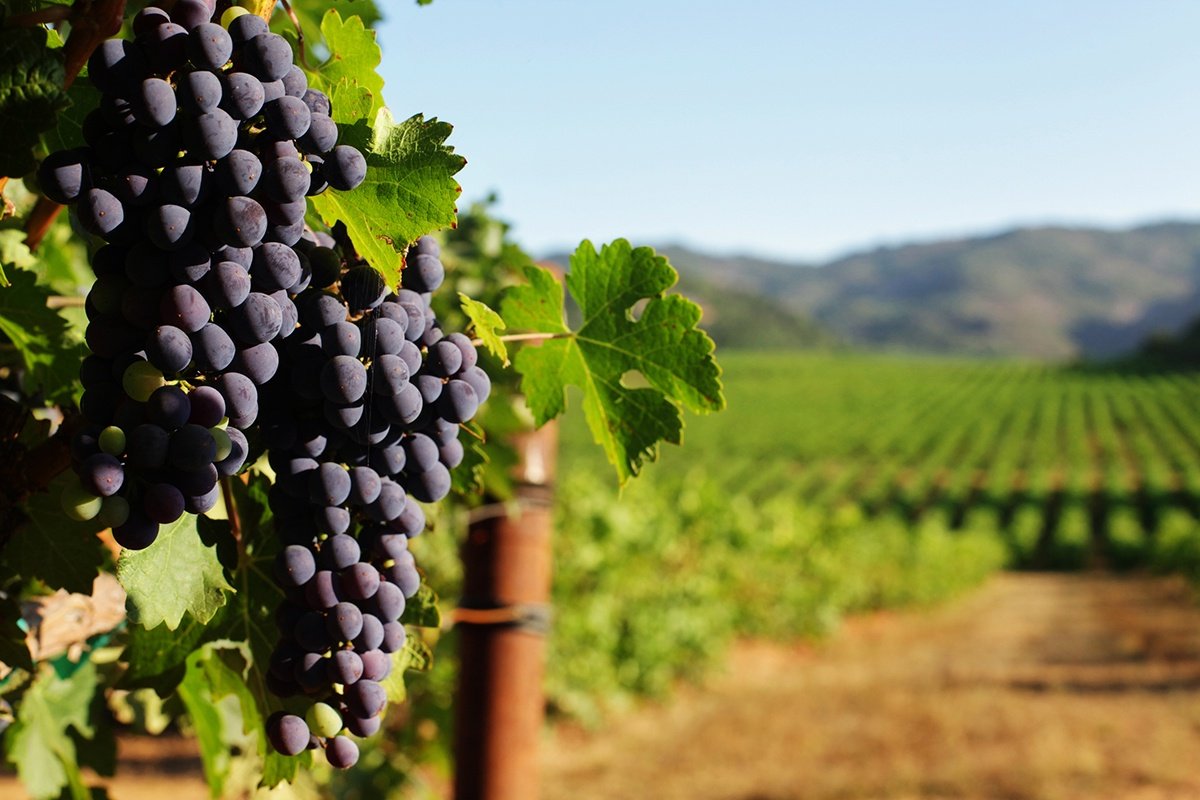
Early history of California winemaking
California has a long and colorful history of wine production, dating back to the late 18th century when Franciscan missionaries began building settlements along the coast from San Diego north to Sonoma. They planted a black grape that they brought from Spain, now known as the Mission grape, which produced a strong, sweet wine that defined California winemaking for decades.
As the Spanish were setting up missions, a wave of French, German, Italian, and Hungarian immigrants began to flow into California. They came from countries where wine was an integral part of everyday life, and planting grapes provided a link from their European heritage to the New World.
When gold was discovered in Sutter’s Mill in 1848, California became the destination for many more thousands of immigrants. They came to pan for gold, work in mines, and otherwise carve out a living for themselves and their families. They too planted vines, using European varietals, including Cabernet Sauvignon and Zinfandel, which are now flagship California grapes. 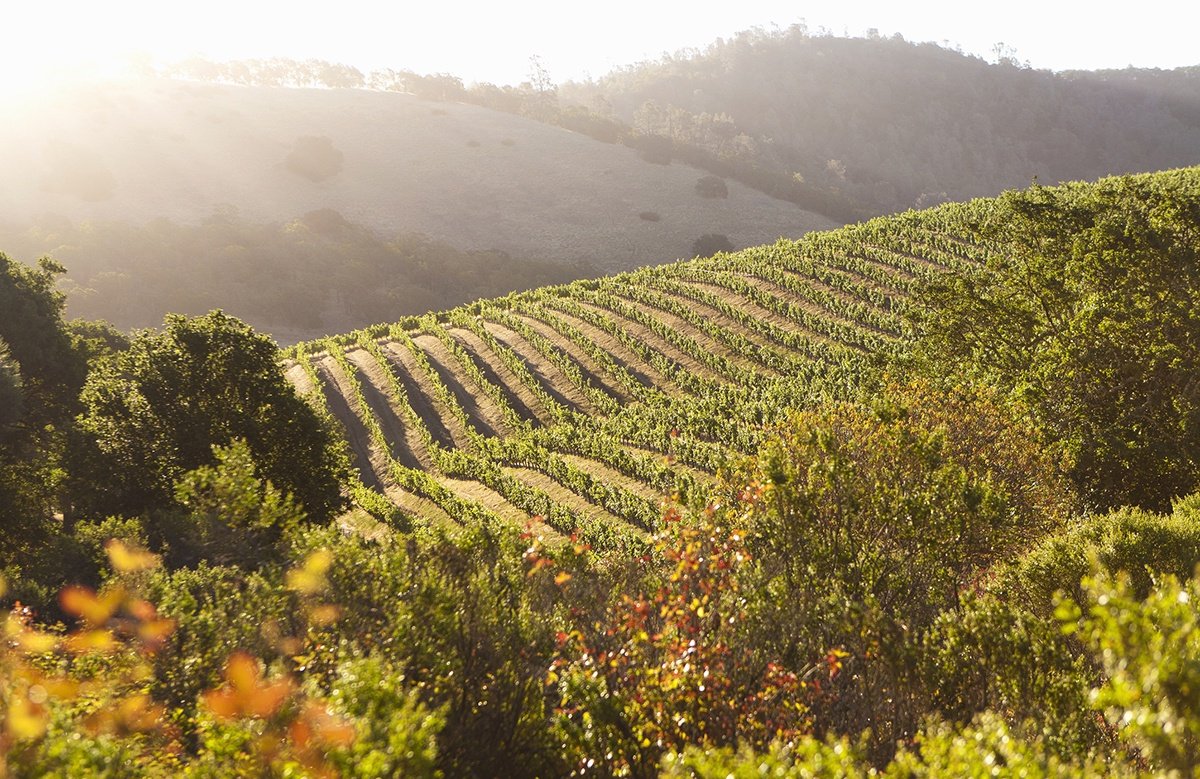 California’s rising population pushed adventurous winegrowers beyond the warm valleys to plant on the hillsides. Though these areas could be difficult to plant and harvest, the cool climate and poor soils yielded grapes that were dark in color and intensely flavored. A select few winemakers focused on improving the quality of wines being produced, but it was easy to produce grapes of mediocre quality in great quantities, and for the most part, California wines remained rustic.
California’s rising population pushed adventurous winegrowers beyond the warm valleys to plant on the hillsides. Though these areas could be difficult to plant and harvest, the cool climate and poor soils yielded grapes that were dark in color and intensely flavored. A select few winemakers focused on improving the quality of wines being produced, but it was easy to produce grapes of mediocre quality in great quantities, and for the most part, California wines remained rustic.
1900s–1960s
The California wine industry began to really take shape in the early 1900s. By the mid-19th century, California was producing millions of gallons of wine per year and was the largest wine producer in the United States until two disasters struck.
The first was an infestation of phylloxera, the louse that attacks vine roots, which by 1915 destroyed 250,000 acres of California vineyards. Then, in 1919, Prohibition was enacted, outlawing the manufacture, transportation, sale, and possession of alcoholic beverages. Hundreds of California wineries were forced to close.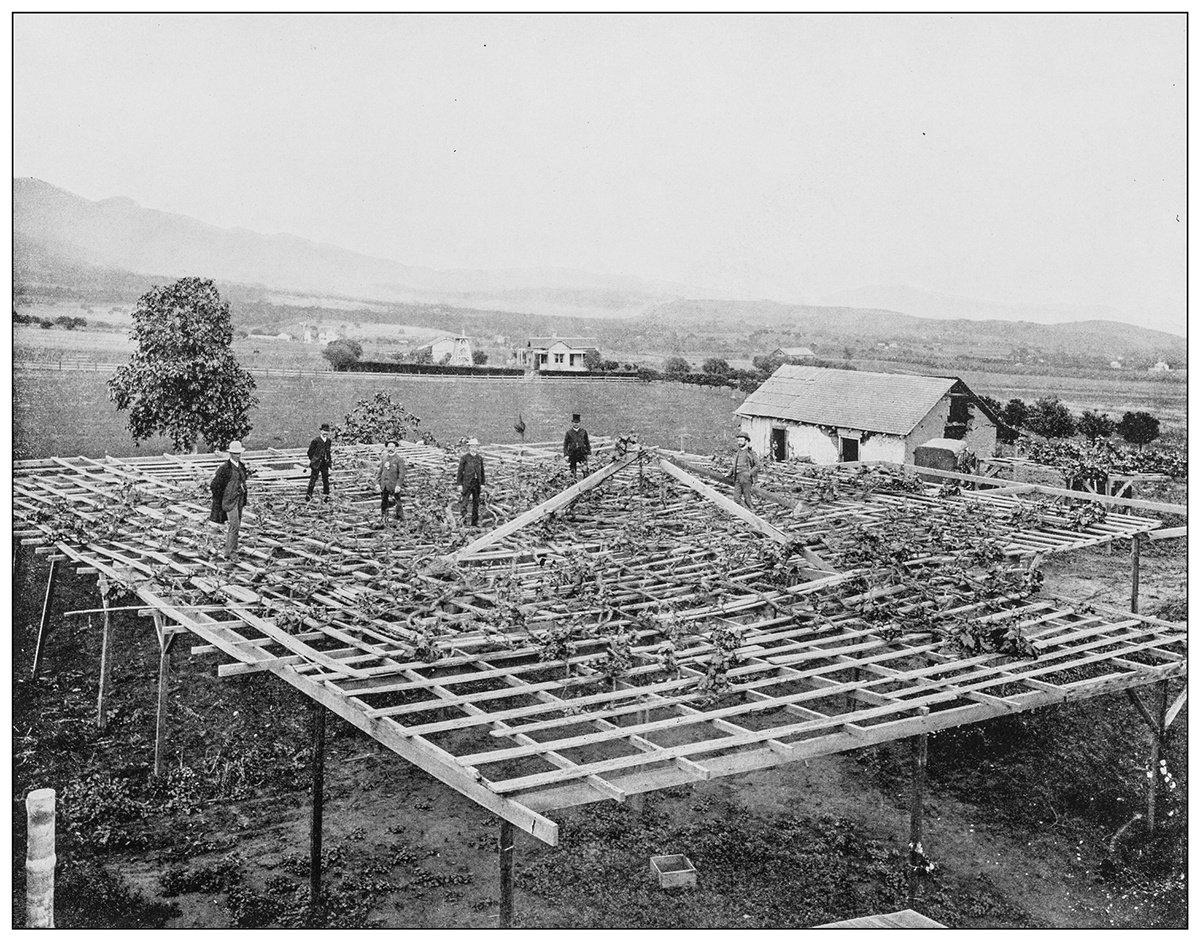
By the time Prohibition was repealed in 1933, most wineries were in sad shape, having been neglected for years. The University of California played a major role in moving the rekindled industry to quality, defining climate zones for growing fine wine grapes and establishing strict sanitation and quality production standards for the state’s wineries.
In the 1960s, the California wine industry began to lay the foundation for a surge in wine sales. Mid-century Americans loved ice-cold sodas and chilled martinis, so marketing chillable white wines to consumers was an easy step.
The industry received a boost in 1976 when a Franco-Californian blind tasting was held in Paris to commemorate the U.S. Bicentennial. To the surprise of everyone — especially the French — two upstart wineries from the Napa Valley finished in first place. The tasting, known as “The Judgment of Paris,” triggered an avalanche of global publicity for California wine, even prompting some French winemakers to join forces with or buy California properties.
Several other trends soon emerged to shape the market further. The move toward cooler climates proved as important as the recognition that controlling crop yields, using natural winemaking techniques and fermenting wines in toasty oak barrels would lead to finer, more complex wines. The spread of skilled California winemakers, with their varied tastes and inspirations, meant that a broad spectrum of wine styles — from elegant and finely structured to powerful and fruit-filled — would be made right there in the state.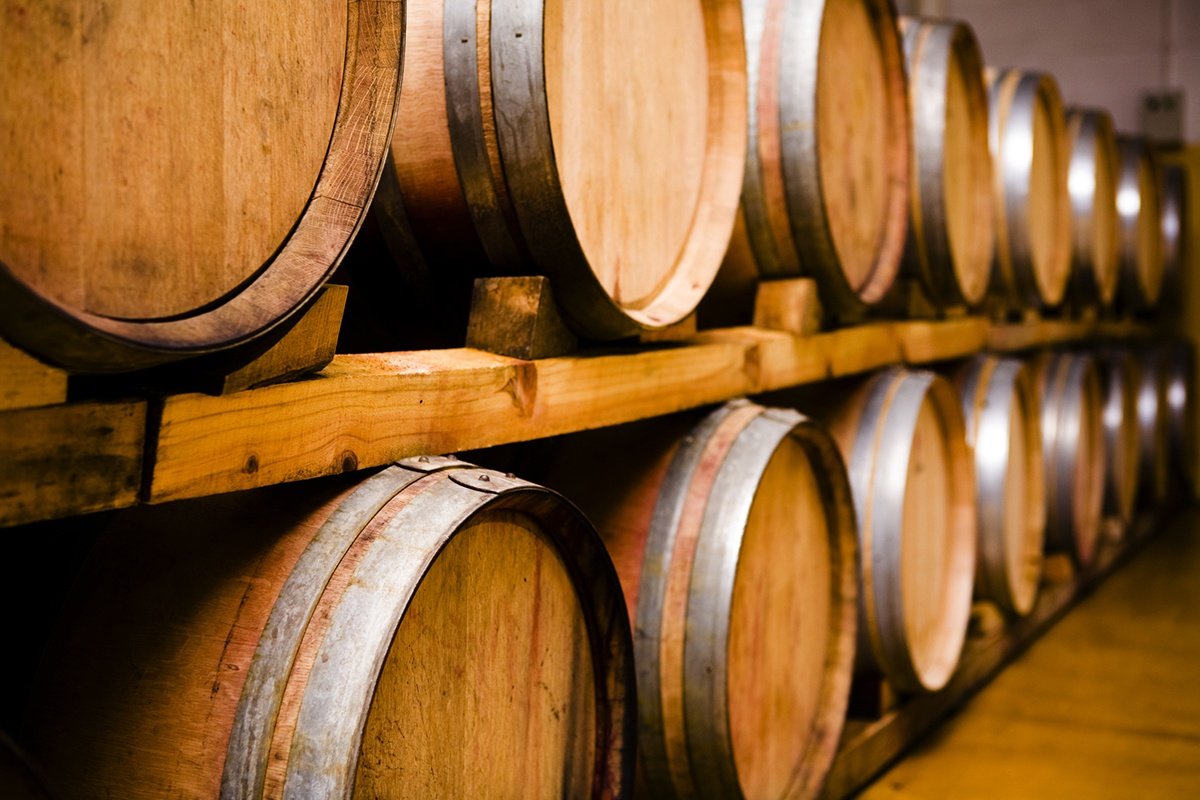
Climate
Have you ever wondered how this sun-kissed state is able to produce such a wide array of high-quality wines? The terroir and geography differ considerably throughout the state, ranging from warm inland valleys to cooler coastal areas.
California winegrowing conditions are governed by proximity to the Pacific Ocean. Cold ocean air turns to fog as it moves up the valleys to cool the land. The cycle of hot days followed by cool, foggy nights lengthens the ripening period and increases the flavor intensity of grapes.
Almost all of the fine wine regions of California are located in areas influenced at least somewhat by the Pacific fog bank. Further inland, consistently hot, sunny areas are used more for fruit and vegetable farming and bulk wine production.
While the threat of wildfires has shown an increasing trend in the past decade, receiving rainfall during the critical harvest period is much less of a concern in California than it is in the famous wine regions of Europe, as most rain comes during the winter and spring months.
Key winemaking regions
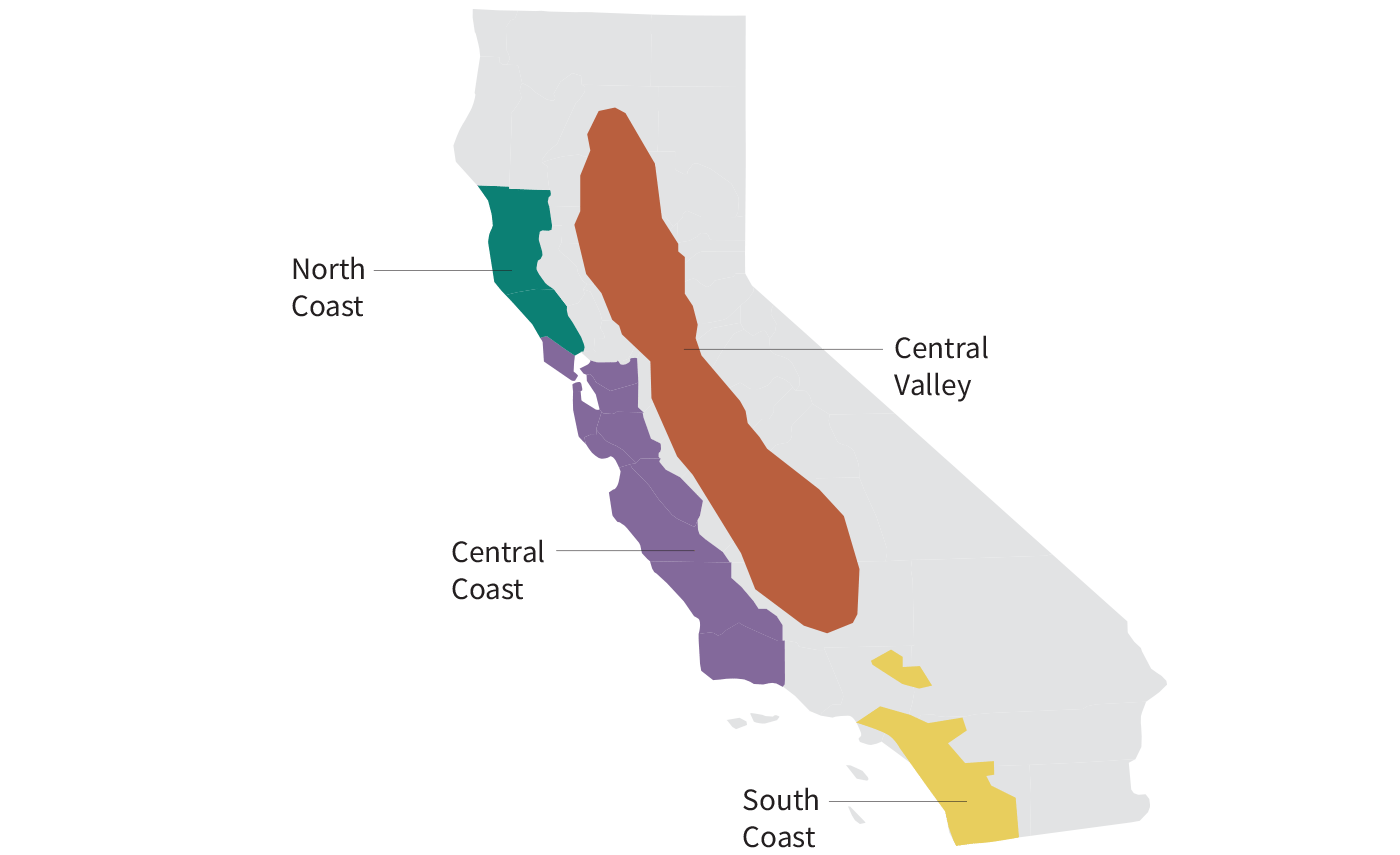
California’s high number of AVAs (141) speaks not only to the size of the Golden State, but also to the diverse range of geographies and climates within it. To truly digest the wine map of California, you must first understand that this state can be easily divided into four wine-producing regions: North Coast, Central Coast, Central Valley, and South Coast.
North Coast
Home to both Napa and Sonoma County — the top two wine regions in California — the North Coast (which is located in Northern California) consists of more than half of the entire state’s wineries. Mendocino County and Lake County are also popular wine regions in the area, and best known for their boutique family-owned wineries.
Napa Valley is one of the most famous wine regions in the entire world — and it only takes a quick visit to notice that Cabernet Sauvignon and Chardonnay are its most widely planted grapes. If neither of those options intrigue you, Napa Valley is full of surprises and produces several other award-winning varietals. 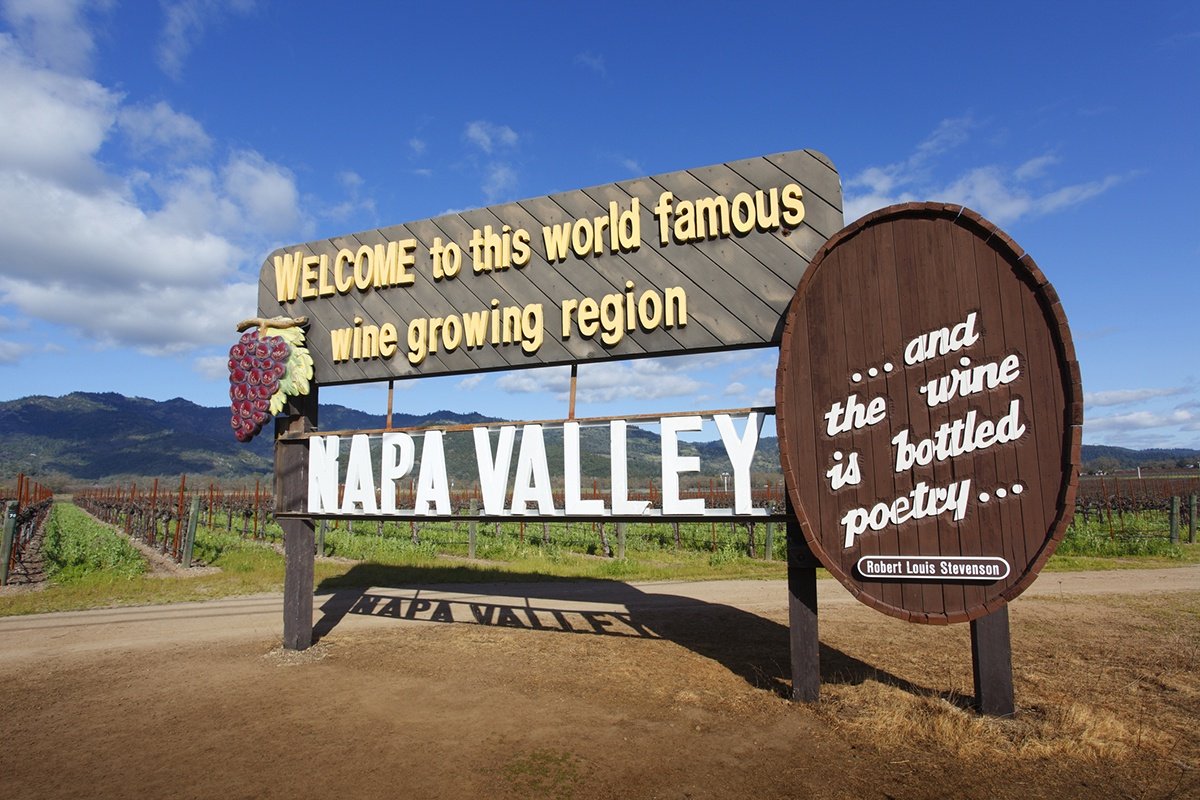 Sonoma County, on the other hand, is perfect for Cabernet Sauvignon and Pinot Noir fans. Here, over 400 wineries bottle elegant California red wines. Within this region, you will find Alexander Valley, Russian River Valley, Dry Creek Valley, and many other well-known sub-regions.
Sonoma County, on the other hand, is perfect for Cabernet Sauvignon and Pinot Noir fans. Here, over 400 wineries bottle elegant California red wines. Within this region, you will find Alexander Valley, Russian River Valley, Dry Creek Valley, and many other well-known sub-regions.
Central Coast
While the Central Coast may not be California’s most well-known region, it spans along the coast from the San Francisco Bay Area in the north, to Santa Barbara County in the south. For this reason, it’s common to see it split into the North Central Coast and the South Central Coast. Overall, this wine region tends to be more laid back than Napa and Sonoma, offering smaller wineries that focus on quality over quantity.
The most popular AVAs within the North Central Coast are Livermore Valley, Monterey County, and Santa Cruz Mountains. In the South Central Coast, San Luis Obispo, Paso Robles, and Santa Barbara attract the majority of visitors. 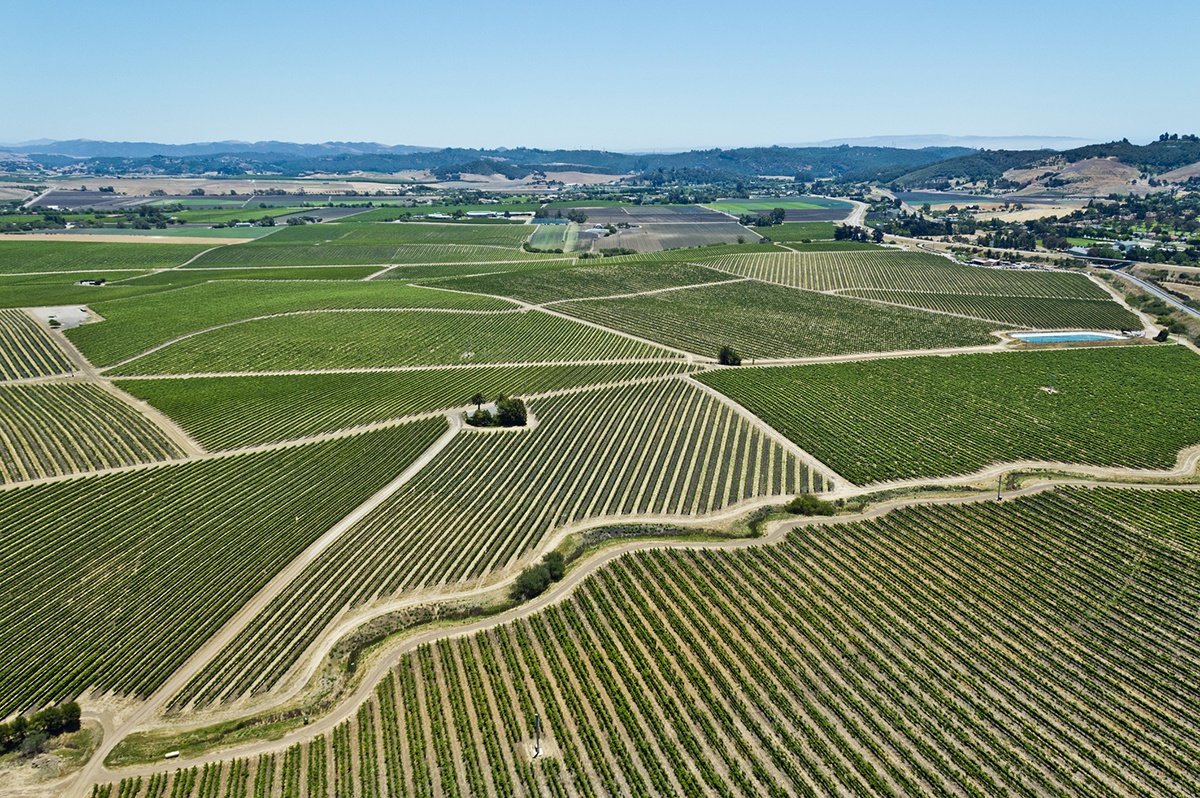 The most famous of these is Paso Robles, one of California’s oldest wine regions, dating all the way back to the 1790s. Known for its rolling hills and valleys, Paso Robles has developed a reputation for its red wines, specifically Zinfandel, Cabernet Sauvignon, and its Rhône-style wines.
The most famous of these is Paso Robles, one of California’s oldest wine regions, dating all the way back to the 1790s. Known for its rolling hills and valleys, Paso Robles has developed a reputation for its red wines, specifically Zinfandel, Cabernet Sauvignon, and its Rhône-style wines.
Two of the top AVAs in the Central Coast are Santa Ynez Valley and Santa Maria Valley, both located in the heart of Santa Barbara County. Santa Ynez Valley is the second oldest appellation in the U.S., behind Napa, and hosts over 300 wineries. Santa Maria Valley is home to 34 wineries and tasting rooms. Here, the winemakers aren’t just the names you see on the label — they’re approachable and always ready to pour you glass.
Central Valley
The Central Valley grows the largest number of grapes in California, and is considered the state’s workhorse wine region. In fact, this frill-free region produces 75 percent of the grapes used in the state’s wine production. If you see a bottle that’s labeled “California Wine,” it’s probably from the Central Valley.
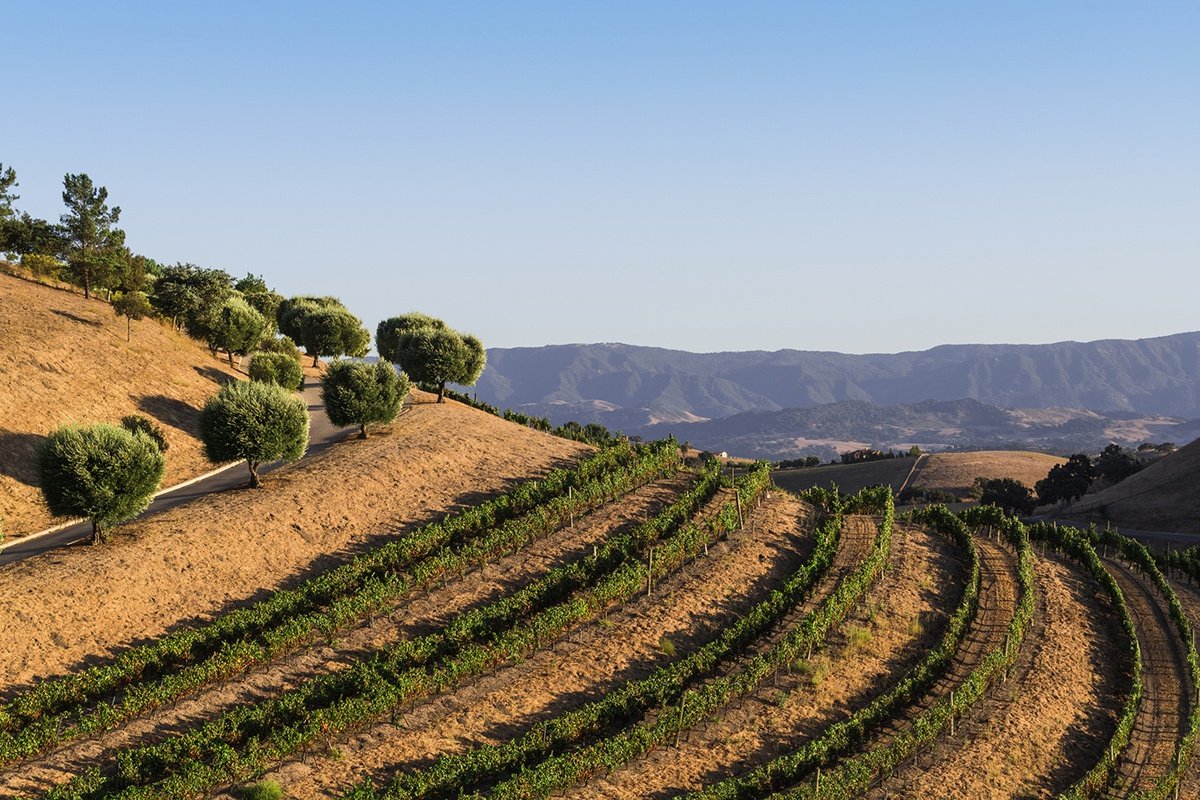
South Coast
The South Coast covers everywhere south of Los Angeles all the way down to the Mexico border line. As you can imagine, this vast region offers a variety of different wines. The grapes that thrive the most in this region are Chardonnay, Shiraz, Zinfandel, and Cabernet Sauvignon.
Temecula Valley is the star of the South Coast, with nearly 50 wineries populating the region’s rolling hills. Because Southern California climate is perfect for most varietals, here you’ll find award-winning Syrah, Zinfandel, Cabernet Sauvignon, Chardonnay, and Pinot Noir. 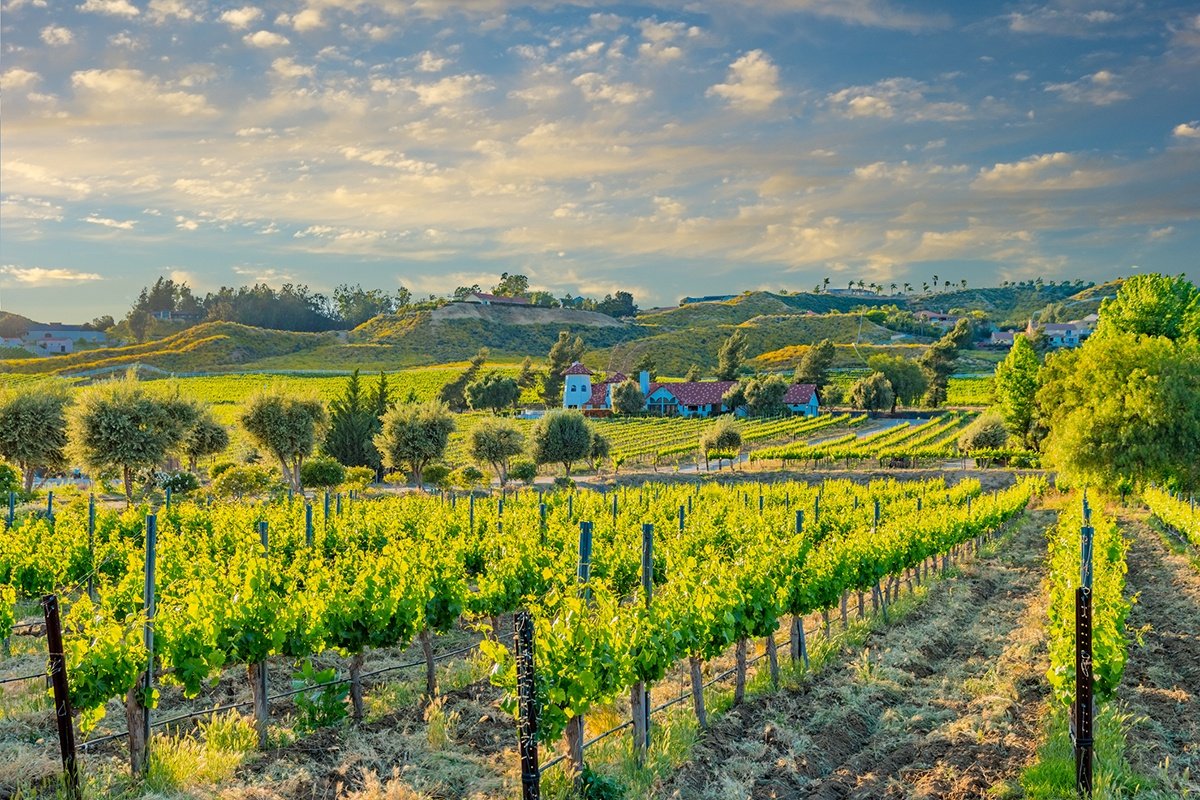
California’s leading grape varietals
You can find over 100 distinct California wine grapes and over a dozen different varietals from California. However, the following wines are the best-known in the state.
Cabernet Sauvignon
![]()
Cabernet Sauvignon is a medium to full-bodied, tannic red wine that goes great with rich red meats, peppery sauces, and dishes with bold seasoning. Hard cheese like aged cheddar or gouda also goes exceptionally well with a California Cab.
Pinot Noir
![]()
Pinot Noir is usually a light-bodied red wine, but like any other varietal, its flavor ranges depending on the region it was produced. In warmer regions like the Russian River Valley, Pinot Noir tends to be both richer and fuller, displaying dark fruit notes.
In cooler regions like the Sonoma Coast, Pinots are lighter-bodied and exhibit floral and red fruit notes. Either profile will pair well with chicken, pork, duck, and mushrooms.
Chardonnay
![]()
Chardonnay is a medium to full-bodied white wine that’s produced in two different styles, oaked and unoaked. You’ll likely find that unoaked is more crisp, citrus-y, and refreshing while oaked has a big, butter-y taste to it. Both pair well with Brie-style cheese, seafood, and creamy pasta.
An easy way to figure out if a Chardonnay will pair well with your dinner dish is asking yourself whether you’d put butter on it. If the answer is yes, then go grab your best Chard and enjoy! If the answer is no, then you may need a wine that’s more tart.
Sauvignon Blanc
![]()
Sauvignon Blanc is usually light and crisp with zesty lime, grapefruit and melon notes. Its many fruit flavors shine with each sip and tastes best with herbal flavors like parsley, basil, cilantro, mint, or rosemary.
